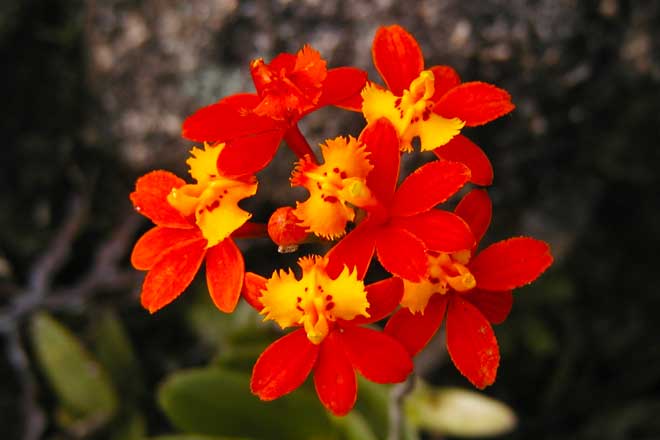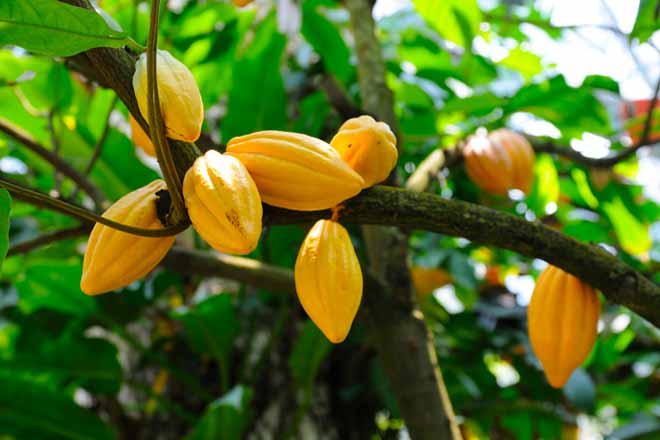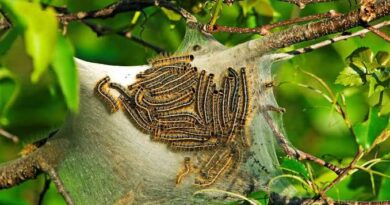Tropical Rainforest Plants: Definition and Importance
This tropical rainforest plants list includes flowers with special adaptations, trees with unusual root structures, and many plants that are used by man either for food or to make other goods and products.
Although no list of this type can hope to include all of the plants in the rainforest, we hope that we’ve provided you with an idea of the lives and uses of many varied plants found in tropical regions.
Meaning of a Tropical Rainforest Plants
Tropical rainforest plants are plants that grows naturally in a tropical climate. A tropical climate is typically hot and humid, with temperatures constantly exceeding 18 degrees Celsius, with zero frost days.
In colder climates north of the equator, tropical plants can be grown as houseplants and set outside during the warm, sunny months.
Commercially, tropical plants can be grown in colder climates, but they must be grown inside of greenhouses and with other forms of controlled environment agriculture.
The term tropical plant refers to any type of plant that naturally flourishes in an environment that resembles the Tropics, a region of the Earth surrounding the equator.
Tropical plants require consistently warmer temperatures and more humid environments than regular plants.
Tropical plants also come in both blooming and foliage plants. Bromeliads, palms, and orchids are considered tropical plants.
Tropical plants are quite hardy, growing quite well as houseplants in more northern climates.
However, they do require a little more care regarding humidity and moisture.
Contrary to what you might expect, most tropical plants do not do well in direct sunlight and should be located in shadier environments. Because many tropical plants naturally grow near the sea, many species of tropical plants can tolerate higher than average salt levels.
Read Also: Things to Consider when Selecting a Site for Plantain Farming Business
Tropical rainforest plants are great for growing in the greenhouse and thrive in the more humid conditions of the greenhouse.
Orchids, bird of paradise, and bromeliad can all be grown commercially in a northern climate greenhouse.
The aesthetic value and sheer beauty of tropical house plants or tropical plants for indoor are immediately evident. Lush, vibrant plants do wonders for your decor, mood, and even your health.
Tropical plants provide a variety of health benefits including giving you cleaner air to breathe.
By cleaning the air, they help you avoid “sick building disease,” which is a result of the common build-up that occurs from dust particles found in furniture and chemicals often found in common household cleaning supplies.
These dust particles and chemicals often do not get filtered out due to a lack of proper air circulation indoors, making you feel tired, drowsy, and even experience itchy eyes and headaches.
Because tropical plants can absorb these harmful toxins from the air, studies have shown they are almost as effective, and definitely more natural and cost effective than air purifiers.
There are several benefits to planting tropical trees outdoors as well.
Use tropical trees to not only increase the beauty of your landscaping, but also to improve the air quality, provide stormwater interception, reduce atmospheric carbon dioxide and conserve energy.
Read Also: Different Varieties of African Eggplant and their Characteristics
A tropical garden features tropical plants and requires good rainfall or a decent irrigation or sprinkler system for watering. These gardens typically need fertilizer and heavy mulching.
Tropical gardens are no longer exclusive to tropical areas. Many gardeners in cooler climates are adopting the tropical garden design, which is possible through careful choice of plants and flowers.
Main features include plants with very large leaves, vegetation that builds in height towards the back of the garden, creating a dense garden. Large plants and small trees hang over the garden, leaving sunlight to hit the ground directly.
Worldwide more human beings gain their livelihood from agriculture than any other endeavor; the majority are self-employed subsistence farmers living in the tropics. While growing food for local consumption is the core of tropical agriculture, cash crops (normally crops grown for export) are also included in the definition.
When people discuss the tropics, it is normal to use generalized labels to group together similar tropical areas. Common terms would include the humid-tropics (rainforests); the arid-tropics (deserts and dry areas); or monsoon zones (those areas that have well defined wet/dry seasons and experience monsoons).
Such labeling is very useful when discussing agriculture, because what works in one area of the world will normally work in a similar area somewhere else, even if that area is on the opposite side of the globe.
Most temperate zone agricultural techniques are inappropriate for tropical areas. The second half of the 20th century saw many attempts to duplicate in the tropics farming practices that had been successful in temperate climates.
Due to differences in climate, soils, and patterns of land ownership, these largely failed. When they did succeed they tended to heavily favor farmers with substantial land holdings, as a high percentage of temperate agricultural practices are economically “scale-based” and favor large scale production.
This in turn pushed many small-scale farmers on to ever more marginal land, as the better quality land was consolidated into larger farms.
Read Also: The Ultimate Step-by-Step Guide to Vegetable Gardening

Introduction to Tropical Rainforests
Image yourself walking through a tropical forest. But it’s not just any forest – it’s a forest full of lush plants that spread out in every direction and more animals then you have ever seen before.
This forest you are walking through is a tropical rainforest. The world is made up of many different types of habitats, orrainforest biome, and one of the most vibrant of these is the tropical rainforest.
Tropical rainforest ecosystem have five defining characteristics. The most notable characteristic and the reason these forests got their name is the large amount of precipitation, or rain, that falls each year.
It rains year-round in tropical rainforests, with most receiving over 100 inches of rain per year! The second defining characteristic of tropical rainforests is their annual temperature, which is normally between 70-90°F.
Although tropical rainforests support a large amount of life, they have surprisingly poor soil quality. Poor soil quality with limited amount of nutrients is the third characteristic of tropical rainforests.
The large amount of rain and high temperatures in these areas increase the speed of decomposition, or the breakdown and decay of living matter. The increased rate of decomposition makes it possible for plants to absorb nutrients more quickly, therefore leaving the soil void of nutrients.
The fourth characteristic of tropical rainforests that helps distinguish them from other types of forests is their location. Tropical rainforests are located close to the equator, and the largest area of tropical rainforest in the world is the Amazon Rainforest in South America.
Read Also: Inter-Cropping and Types as a Cropping System
In the image below, the green highlighted portions of land represent where tropical rainforests are located on the Earth. You will notice that all of the tropical rainforests are located within a range that is close to the equator.
Rainforest Map
The final characteristic of tropical rainforests is the high level of species richness. Species richness can be described as the number of different species that live in a given habitat.
If fifty different species live in one town and one hundred different species live in a second town, then the second town is said to have higher species richness.
Tropical rainforests have the highest species richness of any biome on the planet. This high species richness makes tropical rainforests very diverse. In fact, around 50% of the Earth’s species are found in tropical rainforests.
Aside the tropical rainforest trees, there are animals in the tropical rainforestpopularly referred to as tropical forest animals.
Tropical Rainforest Animals and Plants
Animals and Plants of the Rain Forest – In terms of plant life, you could describe tropical rainforests as lush, dense, and very green. Tropical rainforests are able to maintain high species richness of plants due to the large amount of rainfall and warm conditions.
Some tropical rainforests have over 1,100 different species of plants! Plants found in tropical rainforests are often broad leaved, densely packed, and cover every surface of the forest.
Aside the tropical rainforest trees or rainforest vegetation, there are animals in the tropical rainforestpopularly referred to as tropical forest animals
Because tropical rain forests are some of the oldest ecosystems on earth, they are home to a diverse population of plants and animals. In fact, around 50% of the world’s plants and animals can be found here—with new species still being discovered.
Read Also: How to Start Cucumber Farming Business- (Beginners Guide)
Rain Forest Animals
Here are the list of tropical forest animals:
Butterflies and moths are plentiful in the tropics as well. Many migrate, wintering in a rain forest and spending summers in our backyards.
The tree swallow’s scientific name, Tachycineta bicolor, means “swift-moving two-colored bird.” You’ll hear its cheerful twitters in California, Colorado, Nebraska, and Maryland, among other places.
They winter from Mexico’s Atlantic coast to Belize in great numbers. They are occasionally found in other parts of Mexico and Central America as far south as Costa Rica. On rare occasion, they’ll be glimpsed in Panama. Birdwatchers also spot them regularly on South America’s Caribbean shores.
Rain Forest Birds
Rain forests are unequaled in their richness of bird species. Some birds—such as hummingbirds, harpy eagles, spectacled owls, toucans, macaws, quetzals, hornbills and finches—make their home in the forests year-round.
Others are temporary residents. Many of the songbirds we enjoy in our yards every summer spend their winters in the rain forests of Mexico, Central America and South America—relying on the forest for refuge during the colder months.
Read Also: 13 Health Benefits of Cucumbers
Rain Forest Plants
Over 200,000 species of plants thrive in rain forests. This abundance is due to the warm, humid environment and includes some of the most beautiful and interesting flora:
- orchids
- rubber trees
- poinsettias
- cacao trees
- Venus fly traps
- passion flowers
- peace lilies
- brazil nut trees
- mahogany trees
- passion fruits
- lianas
- birds of paradise
- strangler fig
- quinine
All of the rain forest plants work to provide food and shelter for rain forest animals as well as convert carbon dioxide to oxygen.
Competition at ground level for light and food has led to some unique plant evolution. Some plants live on the branches of other plants and use “air roots” to draw nourishment from the air.
Others, like the strangler fig, will wrap themselves around (and ultimately strangle) large trees to fight for survival.
Beyond beauty and interest, tropical rain forest plants contribute to modern medicine. Approximately 25% of all medicines on the market today come from plants found only in tropical rain forests.
This includes treatments for a variety of cancers, malaria, multiple sclerosis, Parkinson’s disease, high blood pressure and more. But there is still so much untapped potential.
According to Michael Blalick, director of the Institute of Economic Botany (part of the New York Botanical Garden), of all the known plant species, “less than 3 percent have been tested for their medical applications.”
Tropical Rainforest Plants Information
The world’s tropical rainforests are home to an incredible number of plants. The Amazon Rainforest alone provides a habitat for over 40,000 plant species!
The hot, humid climate of the world’s tropical regions provide ideal conditions for plant life.
However, even in a rainforest there is competition for sunlight and nutrients; plants have to adapt to find their place in the ecosystem.
In order to do this, some plants grow faster, some have bigger leaves, and others evolve better defences against predators.
As we’ll find, some rainforest plants have even co-evolved with animals, forming relationships that are beneficial for both.
In this list of tropical rainforest plants, some of our chosen species are very big, some are very beautiful … and some are even dangerous (if you’re an insect)!
Read Also: Health Benefits of taking Watermelon Fruits for Males and Females Fertility
22 Tropical Rainforest Plants List
(1) Epiphytes
 Epiphytes are plants that live on other plants.
Epiphytes are plants that live on other plants.Epiphytes are plants that live on other plants. They don’t have roots in the ground, and have evolved various strategies for obtaining water and nutrients.
Sometimes a single tree can be home to many different epiphyte species, together weighing several tonnes. Epiphytes even grow on other epiphytes!
Many of the plants in this tropical rainforest plants list are epiphytes.
(2) Bromeliads
 The pool of water in a bromeliad is a habitat in itself.
The pool of water in a bromeliad is a habitat in itself.The most common epiphytes are bromeliads. Bromeliads are flowering plants whose long leaves are arranged in a rosette. They attach themselves to the host tree by wrapping their roots around its branches. Their leaves channel water into a central ‘tank’.
A bromeliad’s tank is a habitat in itself. The water is used not only by the plant, but also by many rainforest animals. Birds and mammals drink from the tank. Tadpoles grow there, and insects lay their eggs in the pond.
(3) Orchids
 Many rainforest orchids grow on other plants.
Many rainforest orchids grow on other plants.There are many types of rainforest orchid, and we’ll look at some individual species below. Orchids in the rainforest are often epiphytes.
Some have specially adapted roots that enable them to capture water and nutrients from the air.
Other orchids have roots that spread out over the branch of the host tree, capturing water without needing to bury into the ground.
(4) Açai Palm (Euterpe precatoria)
 Photo: Forest & Kim Starr, resized by ActiveWild [CC BY 3.0 us]
Photo: Forest & Kim Starr, resized by ActiveWild [CC BY 3.0 us]The açai is thought to be the most common tree in the Amazon Rainforest. Despite this, it still makes up only 1% (5 billion) of the 390 billion trees in the region. Its fruit is edible, and an important food in the Amazon region.
(5) Carnauba Palm (Copernicia prunifera)
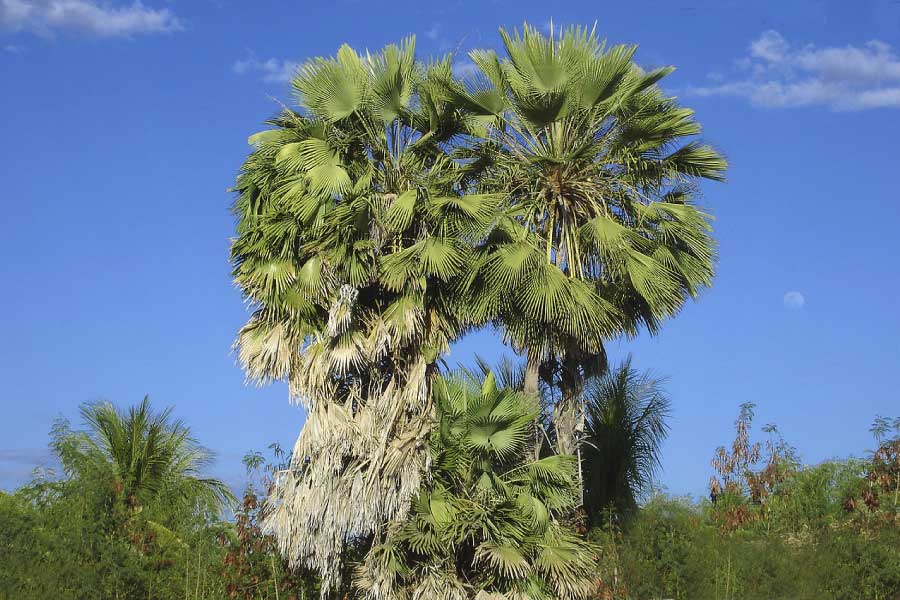 Photo Tacarijus, resized by ActiveWild [CC BY-SA 3.0]
Photo Tacarijus, resized by ActiveWild [CC BY-SA 3.0]This Brazilian palm tree is also known as the ‘tree of life’ because it has so many uses. Its fruit are eaten, and its wood used in building. It is best known as the source of ‘carnauba wax’, which comes from the tree’s leaves.
Carnauba wax is used in car polish, lipstick, soap, and in many other products. It is even rubbed on surfboards to help them slip through the water faster!
(6) Rattan Palm
 Rattan palms are used to make furniture.
Rattan palms are used to make furniture.There are over 600 species of rattan palm. They grow in African, Asian and Australasian rainforests. Rattans are vines; long plants which are unable to support themselves.
Instead, they wrap themselves around other trees. Hooked spines on their stems allow them to climb up the other trees towards the sunlight. Rattans are harvested and used in furniture construction.
Read Also: Health Benefits of taking Watermelon Fruit during Early Pregnancy
(7) Walking Palm (Socratea exorrhiza)
 Photo: yakovlev.alexey, resized by ActiveWild [CC BY-SA 2.0]
Photo: yakovlev.alexey, resized by ActiveWild [CC BY-SA 2.0]Walking palms grow in the tropical rainforests of Central and South America. They have stilt roots that project out of the trunk above the ground.
It was once thought that these roots enabled the trees to ‘walk’ to a new position if it was knocked over by another tree. Scientists now think that the roots simply improve the tree’s stability.
(8) Amazon water lily (Victoria amazonica)
 The leaves of the Amazon Water Lily can grow to over 2 metres in diameter!
The leaves of the Amazon Water Lily can grow to over 2 metres in diameter!The Amazon water lily is an aquatic plant that grows in the lakes and rivers of South American rainforests. Its huge leaves can be up to 3 metres (9.8 ft.) in diameter.
There are rows of sharp spines on the undersides of the leaves. These deter rainforest animals such as manatees from eating them.
(9) Rubber Tree (Hevea brasiliensis)
 Rubber trees are ‘tapped’ for the milky latex that is used to make rubber.
Rubber trees are ‘tapped’ for the milky latex that is used to make rubber.The rubber tree, which was first found in the Amazon Rainforest, is now also grown in tropical areas in Asia and Africa. The tree is harvested for latex, a milky fluid found in vessels in the tree’s bark.
These vessels are opened and the latex which runs out is collected in buckets. This is known as ‘rubber tapping’.
Latex is used to make natural rubber. Natural rubber has many uses, including car tyres, hoses, pulley belts and clothing.
There are over 1.9 million rubber trees growing in the Amazon Rainforest.
(10) Bougainvillea
 Bougainvillea is a rainforest plant.
Bougainvillea is a rainforest plant.A colourful entry to the tropical rainforest plants list, Bougainvilleas are native to South America.
They are grown as ornamental plants in other areas. Bougainvilleas are well-known for their beautiful flower-like leaves, which grow around the actual flower. These thorny plants grow as vines and shrubs.
(11) Indian Timber Bamboo (Bambusa Tulda)
 Photo: Dvellakat (resized & cropped by Active Wild) [CC BY-SA 4.0]
Photo: Dvellakat (resized & cropped by Active Wild) [CC BY-SA 4.0]Bamboo is the largest member of the grass family. Some species of bamboo can grow 90 cm (3 ft.) in one day! Indian Timber Bamboo is a particularly useful species of bamboo.
As its name suggests, it is used to make furniture. It is also used to make paper and musical instruments. It grows in South Asian rainforests.
(12) Vanilla Orchid
 Vanilla Orchid. Many of the tropical rainforest plants in this list are grown commercially.
Vanilla Orchid. Many of the tropical rainforest plants in this list are grown commercially.The vanilla orchid was first used as a flavouring by the Aztecs. Today, the word ‘vanilla’ is usually used to describe a flavour, rather than the plant from which it comes. Vanilla orchids grow like vines, climbing up other trees.
Wild vanilla orchids are pollinated by hummingbirds and melipona bees. They grow in Central and South America.
(13) Bucket Orchid
 Coryanthes hunteriana. Photo: Orchi (resized by ActiveWild) [CC BY-SA 3.0]
Coryanthes hunteriana. Photo: Orchi (resized by ActiveWild) [CC BY-SA 3.0]Plants in the genus Coryanthes, also known as Bucket orchids, rely on bees known as orchid bees for pollination. In order to get the bees’ help, the plants offer the insects a reward: a specially scented substance that can be used by male bees to attract females.
The male bee is first attracted by the flower’s scent. As it tries to get to the sweet-smelling, female-attracting liquid, it will occasionally fall into the flower’s ‘bucket’; a special chamber inside the body of the flower.
The only way out of the bucket is through a part of the flower that attaches pollen to the bee’s body. After making its escape, the bee will then pollinate any other bucket orchid of the same species that it visits.
The bucket orchid and the orchid bee have co-evolved; each is dependent on the other to reproduce.
Read Also: How to Grow Watermelons for Profit – Beginner’s Guide
(14) Silky Oak (Grevillea robusta)
 Photo: Alvesgaspar (cropped / resized by ActiveWild) [CC BY-SA 3.0]
Photo: Alvesgaspar (cropped / resized by ActiveWild) [CC BY-SA 3.0]The silky oak is a large tree that grows in Australian rainforests. It is not closely related to true oak trees. Its timber is resistant to rot, and is used in carpentry and joinery.
(15) Tualang (Koompassia Excelsa)
 Photo: Dick Culbert (cropped / resized by ActiveWild) [CC BY 2.0]
Photo: Dick Culbert (cropped / resized by ActiveWild) [CC BY 2.0]Tualang trees grow in the rainforests of Southeast Asia. Countries in which they are found include Thailand, Indonesia and Malaysia. Growing to heights of over 80m (262 ft.), tualangs are among the tallest of all rainforest trees.
They tower over the other trees in the forest, forming the emergent layer – the top layer of the rainforest.
Tualangs have very smooth bark, making them difficult for animals to climb. This is beneficial to the giant honey bee, an insect that nests high in the tree’s branches.
Tualang trees have buttress roots, making them both more stable and able to reach more nutrients.
(16) Strangler Figs

Many epiphytes avoid harming the plants on which they grow. This isn’t the case with strangler figs, which kill the host plants.
A strangler fig begins life in the branches of another tree. As the fig grows, its roots descend to the forest floor. Its stem then wraps around the host tree, forming a lattice. The fig is now able to capture more sunlight and draw up more nutrients than its host, which eventually dies.
The strangler fig lattice, which is often formed by more than one fig, is by then strong enough to support its own weight. It remains standing even when the host tree has rotted away.
The strangler fig is an extremely important plant in the rainforest ecosystem. Its fruit is food for many rainforest animals.
(17) Corpse Flower (Rafflesia arnoldii)
 Rafflesia Arnoldii – also known as the ‘Corpse Flower’.
Rafflesia Arnoldii – also known as the ‘Corpse Flower’.The Rafflesia arnoldii has the biggest flower in the world. This rare plant grows on vines that cross the forest floor. It is found in the rainforests of Borneo and Sumatra.
Rafflesia arnoldii flowers can reach 1 m (3 ft.) in diameter. They produce a smell like rotting flesh, which is how they got the name ‘Corpse Flower’. This scent attracts the flies which will pollinate the flower.
(18) Pitcher Plants
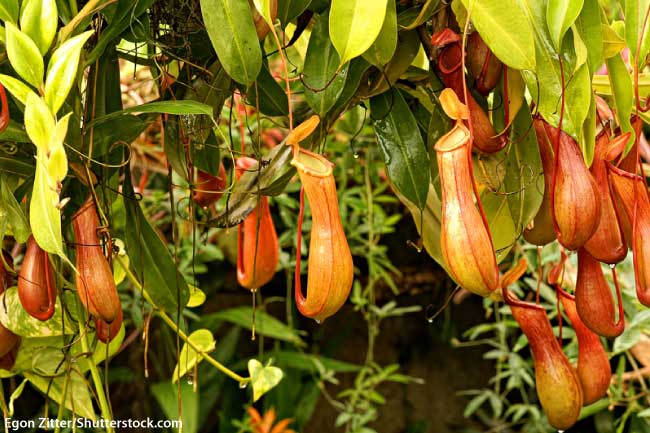 Pitcher plants capture and drown unwary insects.
Pitcher plants capture and drown unwary insects.No tropical rainforest plants list would be complete without a carnivorous plant! Pitcher plants have evolved to prey on insects, and are found in areas in which the soil is low in nutrients.
There are many different types of pitcher plant; all work in the same way. Insects fall into the plant’s tube-like body after having been lured in with nectar or tempting scents. The insects are prevented from escaping by hairs in the sides of the tube.
The insects eventually drown in a pool of liquid at the bottom of the tube. The plant draws nutrients from bodies of their prey.
Some of the best-known pitcher plants are those of genus Nepenthes.
(19) Heliconia
 Heliconias are also known as ‘Lobster Claws’. Can you guess why?
Heliconias are also known as ‘Lobster Claws’. Can you guess why?Heliconias are flowering plants found in the tropical rainforests of the Americas. They grow on the forest floor, and are pollinated by hummingbirds attracted by their brightly-colored flowers.
Heliconias are popular ornamental plants in many parts of the world. They are also known as ‘lobster claws’ due to the shape of their flowers.
Read Also: Snail as a Super Food – 12 Reasons why you must Eat Snails
(20) Kapok (Ceiba pentandra)
 Kapok trees are tall trees with buttress roots.
Kapok trees are tall trees with buttress roots.Kapok trees are tall rainforest trees whose highest branches form part of the emergent layer. Kapoks have buttress roots. Kapok trees are found in the tropical rainforests of South America, Asia and Africa.
(21) Durian (Genus: Durio)
 Although durians are foul-smelling, they are surprisingly good to eat.
Although durians are foul-smelling, they are surprisingly good to eat.Durian trees grow in Southeast Asia. Their fruit is famous for being very strong-smelling. Some people like the smell, but others find it repulsive! Despite this, the fruit is a popular food.
(22) Mahogany (Genus: Swietenia)
 Mahogany is a valuable hardwood that comes from the rainforest.
Mahogany is a valuable hardwood that comes from the rainforest.Trees of the genus Swietenia are harvested for their wood, which is called mahogany. This red-brown wood is valued for its beauty and colour. Swietenia trees are native to the rainforests of the Americas.






